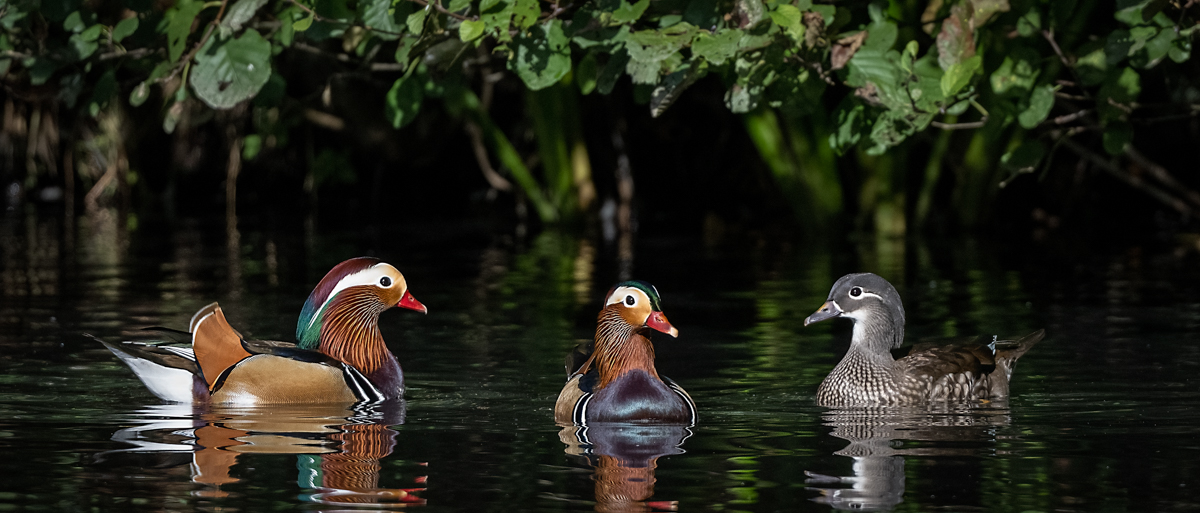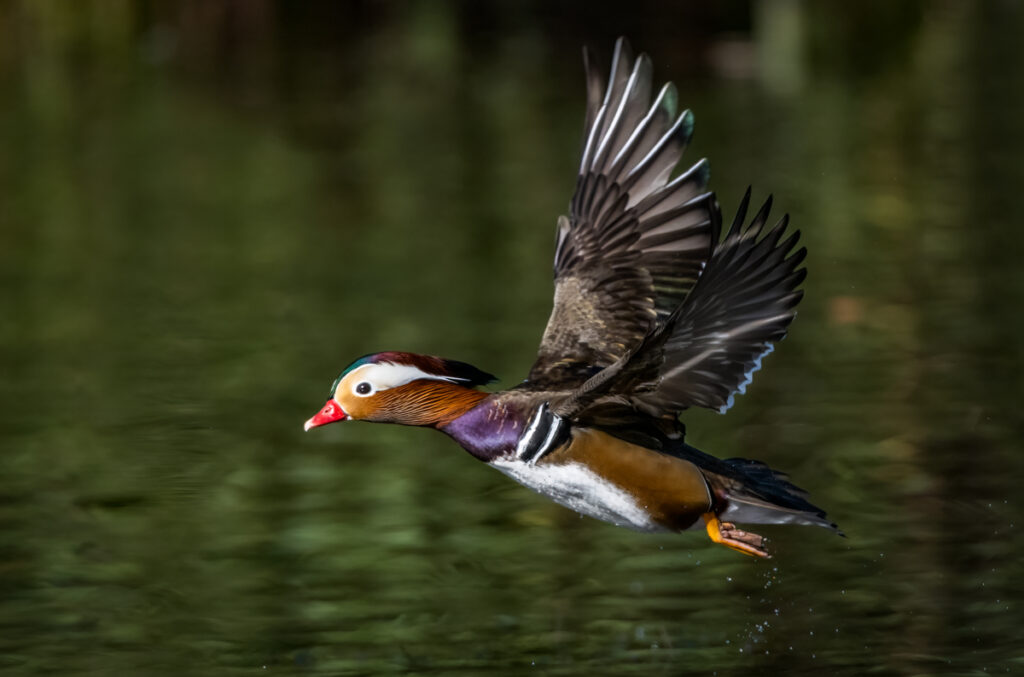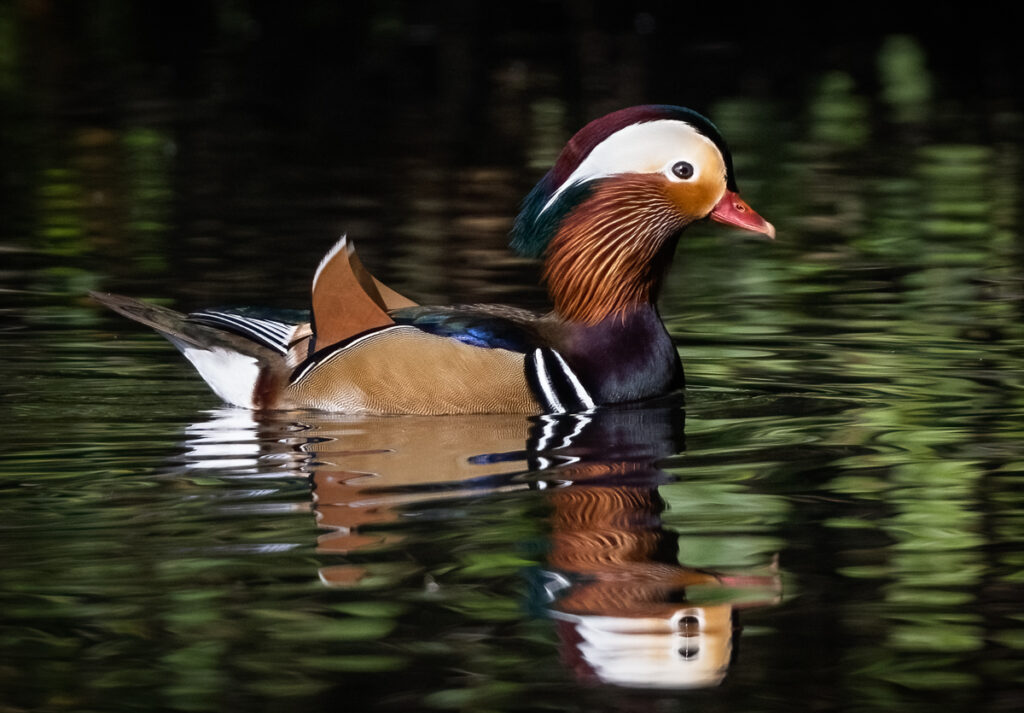
There are more than 160 species of duck in the world, many of which are incredibly beautiful birds and it may be very difficult to pick a favorite – however, maybe there is a standout candidate. The Mandarin Duck is perhaps the most beautiful of them all, with its orange whiskers, large orange sails, red bill, white face crescent, purple breast with two vertical white stripes, and an expandable shaggy head crest full of greens, purples, and orange depending on the light, it really is the most exquisite of all the ducks. As with the majority of duck species the female Mandarin does not have the flamboyant colors of the male, instead it is mostly brown with a distinctive pair of white spectacles around its eyes. The Mandarin’s closest relative is the Wood Duck that many of us are very familiar with here in North America.

Mandarin Ducks are a native of Asia, they can be found in far Eastern Russian, Japan, China, Taiwan, and Korea – they were once widespread but unfortunately, they are now a declining species in their native range due to hunting, exports, and habitat destruction. The current population in Asia is estimated to be close to 60,000 individuals with the majority in Japan.
In Asia, Mandarin Ducks appear in many folklore tails and mythology and are considered a symbol of love, fidelity, and fertility. One story tells how a gardener by the name of Yuan, rescued Ying, the daughter of his wealthy employer from drowning in a pond. Rather than being treated as a hero, however, the employer saw the act as an intrusion and jailed the gardener. Ying visited Yuan in prison and gave him a brightly colored robe. The father then threw Yuan, complete with the robe into the pond where the heartbroken Ying soon followed. Later a pair of Mandarin Ducks were seen at the very spot and were believed to be a symbol of Yuan and Ying and they continued to live their lives together.

Mandarin Duck themed presents are often given to newlywed couples at weddings. The gifts are believed to provide marital bliss, love, and plentiful offspring. Similarly, they can be given to singles to help in their search for love. They are often used as a feng shui cure to help maintain healthy relationships.
In reality, Mandarin Ducks do not mate for life, they are monogamous for at least one season though. They find love on their wintering grounds before moving to their nesting areas. Nests are normally in tree hollows especially old woodpecker nest holes, though natural cavities will often be used as well as man-made nest boxes. The nest sites can be a long distance from the water. Upon hatching chicks do need to feed on water and will have to make a leap of faith from the nest hole to the ground. The male which has helped incubate the eggs will now leave the female to raise the ducklings on her own. The male will then hang out with his male friends molting into his dull eclipse plumage and eventually back to his brilliant breeding plumage later in the season.

As you’d expect, due to their beauty, Mandarin Ducks have been popular through the years to be kept as pets or in wildfowl collections. In many areas of the world escapes from captivity have led to feral populations exploding in non-native countries and habitats. In Europe, there are now small but growing populations in Ireland, France, Belgium, Germany, Netherlands, Denmark, Austria, and Switzerland. In the United Kingdom, a significant population of over 7,000 birds represents about 10% of the world population. There is a small population of Mandarin Ducks in the United States too, with about 500 in Sonoma, California. With numbers in its native range continuing to decline, the feral populations become very important for the future survival of the species.
Owen recently had the opportunity to photograph the Mandarin Duck on a recent trip to the United Kingdom. On a visit to Cannop Ponds in the Forest of Dean (Gloucestershire), there were 16 Mandarin Ducks, who although shy and often hidden under their preferred overhanging trees habitat did on occasion come out into the open and pose very nicely for photographs.


